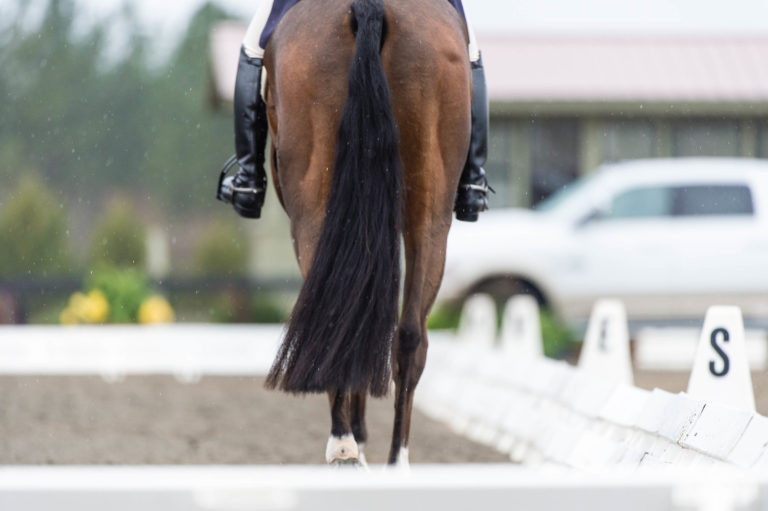There are between 4 -6 reflex points along each side of the backbone and the length of the saddle support area. Ill-fitting saddles can produce unwanted behaviour when they exert pressure on reflex points along your horse’s spine.
The horse’s non-conscious ‘survival’ reflexes impact the muscles which are enervated by Cranial Nerve 11 (CN11) in the wither area. Similarly to when the mare or a rival horse is bitten here or the saddle gullet plate pinches, nerve signals to the brain block movement in the upper arm and shoulder blade, inhibiting his ability to go forward. The rider gives the signal to move forward however, when the tree angle is too wide or the tree width is too narrow or the tree exerts pressure on Cranial Nerve 11, the horse cannot comply. He instinctively drops his back, locks the shoulder, and rotates the pelvis. Similarly, if the gullet channel is too narrow, or when the saddle twists during movement (from natural asymmetry) the horse will reflexively lower his back to escape the pressure and pain. When the longissimus muscle contracts, the horse will drop his back (and vertebrae may fall into each other as in kissing spine syndrome). With further contraction of the longissimus, the pelvis rotates forward and open. Forward impulse and momentum are lost. These reactions cause instinctive immobility for the horse. In nature, these are critical for survival. A stallion mounts the mare without being kicked, and rivals are immobilized when fighting for dominance. Pinching lunging girths, vaulting girths, driving harnesses and fore girths, have the same effect on muscles in the wither region as a vise grip.
Uncontrollable, defensive behaviour, not going on the bit, and a rider out of balance are other ramifications of a poorly fitting saddle. The rider may mistake this for ‘stubbornness’ and in frustration resort to using spurs or whip. The horse wants to please by responding to aids, but pressure on reflex points inhibits his ability to do so.
The bucking reflex point is located over the fascia behind the 18 lumbar vertebra. The horse tries to get rid of pressure when the saddle is too long, and presses on the fascia in this area over the transverse processes. Further indications include doing a pace during the walk (both front and hind legs on one side move together rather than diagonally with the opposite side), dragging the hind legs during the trot, or showing a four-beat canter.
When the panel points or the billets exert pressure on the subscapular and thoracodorsal nerves, the natural reflex causes the triceps to contract, inhibiting movement in the front. The horse moves like a ‘sewing machine’ (on the spot, more or less) and tripping or stumbling can also result.
A saddle that consistently puts pressure on reflex points will eventually cause long term damage to your horse’s back. As riders we want a horse with a loose, supple and engaged back and the ability to ‘step under’ with the hind end. This ensures we are not riding on the forehand, taking pressure off all the ligaments, tendons, muscles, and bones of the horse to keep it healthy for a lifetime of enjoyment and riding in harmony.
https://youtu.be/hMoeO-k6VHI
Author of ‘Suffering in Silence – The Saddle fit Link to Physical and Psychological Trauma in Horses’ (2013) Jochen Schleese teaches riders and professionals to recognize saddle fit issues in Saddlefit 4 Life lectures and seminars. We help you find answers in a personal 80 point Saddle Fit Diagnostic Evaluation.
1-800-225-2242 www.Saddlefit4life.com











